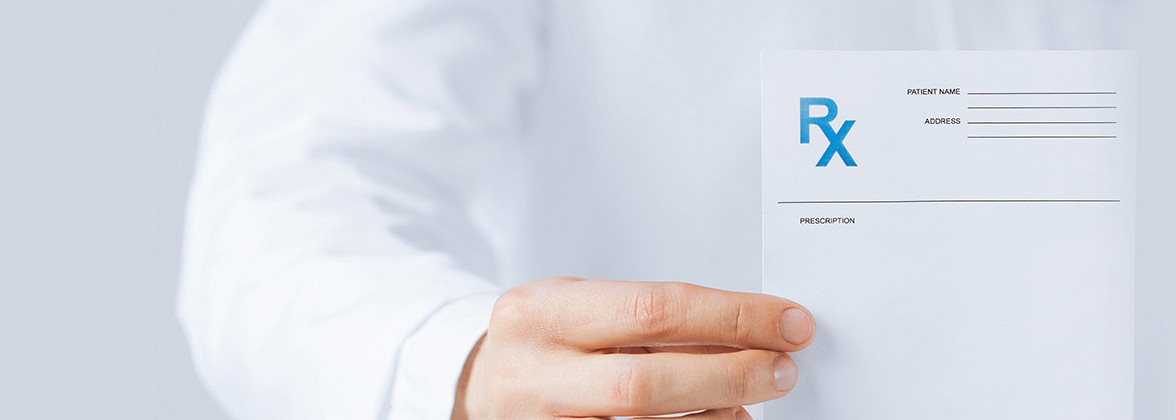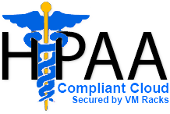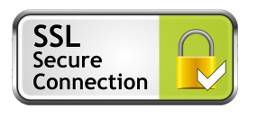Just a Handfull Of Ailments that Doctors Online Treat!
 Cold Sores
Cold Sores
Cold sores (also referred to as fever blisters) are groups of tiny blisters that typically occur on the lip or around the mouth. These sores are caused by the herpes simplex virus, type 1 (HSV-1). The skin around the blisters gets sore, red, and swollen, and they can break open and bleed. If left alone, they generally heal within 7 to 14 days.
The herpes simplex virus enters the body through a small break in the skin. From there, it spreads when a person touches the cold sore or the fluid inside the blister by sharing razors or eating utensils, kissing someone, or touching the saliva. Cold sores are easily diagnosed, but difficult to treat. There are many skin creams, ointments, and pills that can lessen the severity, but they do not actually cure the virus. Once you get cold sores, the virus remains in your body for the rest of your life, a process that doctors call “lying dormant” (WebMD, 2013).
On the Path to a Cure for Cold Sores
Scientists believe they have made ground on the path to a cure for cold sores. Several investigators help to discover a new way the immune system combats the type 1 herpes simplex virus (HSV-1). Researchers with the Canadian Institutes of Health Research, Penn State, and Washington University all participated in a five year study.
Once human cells are infected with HSV-1, the virus hides and blocks protection from the immune system. The research team, led by Dr. English (2009), identified the exact combative cellular mechanism in this biological game of hide-and-seek. A nuclear membrane of an infected cell can uncover the type 1 herpes virus and stimulate the immune system to destroy the virus. Using mice subject cells, the researchers studied the herpes-fighting mechanisms. They now are studying the herpes-combating cellular processes. Their hope is that these findings could hasten the development of new therapies that prevent forms of invading viruses and bacteria.
Not only does this mean a potential cure for cold sores, but for serious harmful viruses, such as the human immunodeficiency virus (HIV) and hepatitis C virus (HCV). The scientists say that they may not be able to completely rid the body of the type 1 herpes simplex virus, but they believe they can keep the virus in a dormant (hidden) state.
Studies Say Short Course Cold Sore Therapy Works
Treatment of herpes infections and recurrent cold sore outbreaks still pose a challenge in the 21 century. Many medications have been useful to suppress the virus. These include acyclovir (Zovirax), valacyclovir (Valtrex), and famciclovir (Famvir). Currently in the U.S., drug resistance to these medications has remained below 0.5% after more than two decades of antiviral therapy. For patients with postherpetic neuralgia (a complication of shingles) and those who are immunocompromised, these treatment options remain first line therapy (Field & VereHodge, 2013).
According to Dr. Spruance and colleagues (2003), a high-dose, short-duration of valacyclovir effective treats episodic cold sores. Not only is it better absorbed than the other antiviral agents, it provides faster resolution of the blisters. In two randomized, placebo-controlled clinical trials, the researchers studied participants who were given two gram of valacyclovir twice daily for 1 day of treatment compared to those who received a one gram dose for 2 days. Also, they studied participants who received placebo compared to treatment. They concluded that a simple, 1 day treatment with valacyclovir is a safe and effective regimen for the treatment of cold sores.
Telehealth Service Options for Cold Sore Solutions
If you or your child has cold sores, consider using the healthcare services of an Online Doctor. The healthcare professional can treat you remotely and offer an prescription. According to information from the Department of Health and Human Services and the U.S. Chamber of Commerce, there are numerous reasons why people should use telehealth services. These include:
• Allows for a more informed decision
• Enhances the quality of care
• Creates a more convenient, efficient delivery of care
• Saves you money
• Leads to a faster, more accurate diagnosis
• Improves administrative coordination
• Enables senior wellness and preventive care
Cold Sore Prevention
While there is no current cure available for cold sores, there are ways you can prevent contracting the virus. Also, if you have HSV-1, you need to protect your loved ones and others from getting it from you. Here are some suggestions:
• Avoid coming into contact with infected body fluids, such as kissing an infected person.
• Avoid sharing eating utensils with others, such as forks and spoons.
• Avoid things that trigger a cold sore breakout, such as colds or stress.
• Always wear sunscreen and lip balm.
• Avoid sharing razors, towels, toothbrushes, or other objects with people.
• Wash your hands often and avoid touching your sore.
• If someone has a sore, do not touch it or shake hands.
Asthma
Asthma is a chronic disease affecting the bronchioles (breathing passages of the lungs). It is caused by long term inflammation. This inflammation makes the airways extremely sensitive to certain "triggers." These can be external or internal factors making the airways swell, filling with mucus. The bronchioles go into bronchospasm (contract) causing even more airway narrowing. The latter makes it difficult for the sufferer to exhale. Subsequently, the person has an asthma “attack.” If you have asthma, find out about the disease and how an doctor could help.
What is Asthma?
Asthma is included in a group of conditions known as chronic obstructive pulmonary diseases (COPD). Therefore, someone who has asthma lives with it every single day of their life. A potentially deadly asthma attack can occur whenever exposure to a trigger takes place. However, the good news is that asthma can be reversed. Rather than being curable, it can be controlled with proper treatment, both on an ongoing and emergency basis.
In the U.S., asthma is extremely common with greater than 17 million people being affected. Over 30 percent of sufferers are children, making it the most prevalent chronic condition in this age group. While it does affect all ages, asthma is certainly more common in the young. Both severity and frequency of asthma attacks tend to decline with age.
Causes of Asthma
Common asthma attack “triggers” include:
• Exposure to wood smoke or tobacco smoke.
• Breathing polluted air.
• Inhalation of certain airway irritants like cleaning products, chemicals or perfumes.
• Breathing in allergens (flowers, dust, mold, or animal dander).
• Flu, colds, bronchitis or sinusitis.
• Exposure to dry, cold air.
• Emotional stress or excitement.
• Exercise or other physical exertion.
• Acid reflux of the stomach.
• Additives to some wines and foods (called sulfites).
• In some women, asthma symptoms are associated with their menstrual cycle.
Symptoms of an Asthma Attack
Once the airways are irritated or infected, an asthma attack is imminent, beginning very quickly (a few minutes) or more slowly (over the period of several hours or days). Major symptoms signaling an attack are:
• Wheezing
• Tightness of the chest
• Breathlessness
• Difficulty speaking
• Coughing
Treatment of Asthma
There are two categories of asthma medications: controller drugs and rescue drugs.
Controller drugs act by minimizing airway inflammation which causes an acute attack. Corticosteroids, in the form of inhalers, are the main medications in the controller group. They work within the breathing passages directly, having very few side effects beyond the lungs. Examples of inhaled corticosteroids include Beclovent (Beclomethasone) and Nasacort (Triamcinolone).
Rescue drugs are only taken once an asthma attack has started. They are not intended to take the place of controller drugs. So, a patient should still take the latter during the course of an asthma attack. The most common rescue medications are inhaled short-acting beta-agonists. They act very quickly, usually within minutes, opening the narrowed breathing passages. Their effects usually last for about four hours. Ventolin (Albuterol) is the most frequently used medication in the rescue group.
Telemedicine Makes Treating Asthma Simple
There are many times when individuals have to leave home, either for business or leisure travel reasons. What if an asthma sufferer goes on a trip and accidently forgets their asthma medications, their inhaler runs dry or they have the misfortune of losing the luggage containing their life saving drugs? What if an asthma sufferer has an infection of the upper respiratory track? What should they do?
Thankfully, there are a few options from which to choose. Today, it is very common to be able to purchase medications online. This can be accomplished by using legal online prescriptions when your own home pharmacy is not available. While getting a refill on your medicine on the Internet may be quite easy and convenient, it is also critical to ensure that you are doing so safely. Always make sure you are using an prescription site that is approved by the FDA when you are travelling within the States.
So….how do you know a good site to use to get your asthma medication refilled? Just go online to QuickRxRefill.com and let one of the telehealth providers assist you with your medication needs. The simple three step process makes your virtual medical experience a breeze. Just sign up, consult with the doctor, and go to a pharmacy and get your medication or medical supplies.
This is a popular medical online website allowing anyone to ask a doctor who is licensed and qualified any medical question and get services. There is a “live chat” feature where a patient can talk to an Doctor in real time to discuss any medical problems. This could include questions regarding asthma symptoms or medications, as well as how to go about getting an emergency prescription filled through a reputable pharmacy while you are away from home. prescriptions are available at QuickRxRefill.com! What could be easier? It could actually save your life.
Resources - Retrieved June 9, 2013
FDA (2012). Buying Prescription Medicine Online: A Consumer Safety Guide. Retrieved from:
http://www.fda.gov/drugs/resourcesforyou/ucm080588.htm
Shiffman, G of WebMD (2013). Asthma. Retrieved from:
http://www.emedicinehealth.com/asthma/article_em.htm
Diabetes
Diabetes is a disease that lasts a lifetime as there is currently no cure. It is a major medical problem, with an estimated 18 million Americans afflicted. Five million are not even aware that they have it. Diabetes is actually a number of different diseases involving problems with insulin levels. Under normal circumstances, the pancreas (located behind the stomach) releases insulin helping the body store and utilize fat and sugar obtained from food.
Diabetes develops when one of the following situations takes place -
• Pancreas produces no insulin.
• Pancreas produces insufficient quantities of insulin.
• The body responds inappropriately to insulin (insulin resistance).
The Role of Insulin in Diabetes
Blood glucose levels are closely regulated by insulin. It is constantly being released in small quantities by the pancreas. When the level of blood sugar rises to a specific level, the pancreas releases additional insulin which pushes more glucose into the cells causing blood glucose levels to go down.
To prevent blood sugar levels from becoming too low (hypoglycemia), the body alerts a person they should eat which releases some of the glucose stores, kept within the liver.
Those with diabetes either do not produce enough insulin or their body cells are insulin resistant, resulting in “high blood sugar”. The clinical definition of diabetes is a blood glucose level of 126 milligrams per deciliter (mg/dL) or greater after fasting overnight.
Types of Diabetes
Type 1 –This kind of diabetes happens when insulin producing cells in the pancreas are destroyed by the immune system. These diabetic patients produce no insulin. They must use injections of insulin to control blood sugar levels. Type 1 is most prevalent in people under 20 but it can occur at any age.
Type 2 – With type 2 diabetic patients produce insulin. However, their pancreas does not secrete enough or else their body is resistant to it. In this type, glucose cannot enter into the body cells. “Adult onset” is another name for type 2 diabetes, and it is the most common type in the U.S. While the majority of cases can be prevented, it remains the number one cause of serious complications, related to diabetes, including chronic kidney failure, blindness and non-traumatic amputations, in people over the age of 40.
Gestational – Triggered by pregnancy, gestational diabetes causes hormonal changes affecting the normal functioning of insulin. It develops in about four percent of pregnancies.
Symptoms of Diabetes
Type 1 diabetes symptoms can be sudden and severe. Consult a doctor, as soon as possible if you experience:
• Increased thirst
• Increased hunger
• Frequency of urination
• Dry mouth
• Weakness or feeling tired
• Unexplained weight loss
• Blurry vision
• Labored breathing
• Loss of consciousness (in rare cases)
Symptoms of Type 2 diabetes can be very similar to the above list. Often, there are no apparent symptoms or they develop very gradually. Other symptoms include -
• Sores or cuts that heal slowly
• Itching of the skin
• Recent gain in weight
• Yeast infections
• Tingling/numbness of the feet and/or hands
• Erectile dysfunction
Management of Diabetes
As mentioned above, diabetes can only be controlled not cured. Keys to managing diabetes are:
• Following a balanced meal plan
• Regular exercise
• Using diabetes medication exactly as prescribed by your doctor
• Home monitoring of both blood sugar and blood pressure levels.
• Routine visits to your doctor and having blood tests as ordered
Clinical Trial Online Disease Management of Diabetes
In August 2012, the Palo Alto Medical Foundation conducted a clinical trial, and the results were published in an American medical journal. The purpose of the study was to determine the effectiveness of an online management system which supports uncontrolled type 2 diabetics.
A year long randomized trial of 415 individuals, with poorly controlled type 2 diabetes with the following intervention methods:
• Wireless uploaded home glucose meter readings
• Detailed diabetes status reports, specific to each subject
• Nutrition/exercise journal
• Insulin records
• Online messaging with team of health care professionals
• Online advice by nursing care manager/dietitian
• Medication management, including online prescriptions
• Personalized educational videos/texts, provided electronically by health team.
Significantly lowered plasma glucose concentrations were noticed at the six month mark. At 12 months, differences were not remarkable but more subjects had improved diabetic control beyond twelve months. The researchers concluded that a multidisciplinary health team, led by a registered nurse, can effectively manage diabetic patients who take advantage of an online management program dealing with specific diseases including diabetes.
Resources
Tang PC et al. (2013). Research and applications online disease management of diabetes: Engaging and Motivating Patients Online With Enhanced Resources-Diabetes (EMPOWER-D), a randomized controlled trial.
JMIA,20(3): 526-534.
UMMC (2011) Type 2 diabetes.
WebMD (2013). Diabetes basics.

WARNING: Limitations of Online Doctor/Medical Consultations and Online Prescriptions, QuickRxRefills Cannot and Will NOT Prescribe, Dispense, or Resell any and all medications Narcotics/Controlled Substances (this policy is fully enforced by the Drug Enforcement Administration (DEA)) for Anti-depressants, Pain, Anxiety, Weightloss, Sleep, ADHD/ADD, Anabolic Steroids, Testosterone Replacement Therapy and any and all Medications that contain GabaPentin or Pseudroephedrine including non-controlled substances or any medications that are considered controversial, Off Labeled (Growth Hormone aka HGH) or recalled in nature such (i.e. Retin-A, Accutane). Furthermore, QuickRxRefills is not a substitute for an office based physician in your location nor is it a substitute for Emergency Medical Care or 911. If you do experience a "true" medical emergency your are encouraged to pick up the phone and dial 911 as soon as possible.






